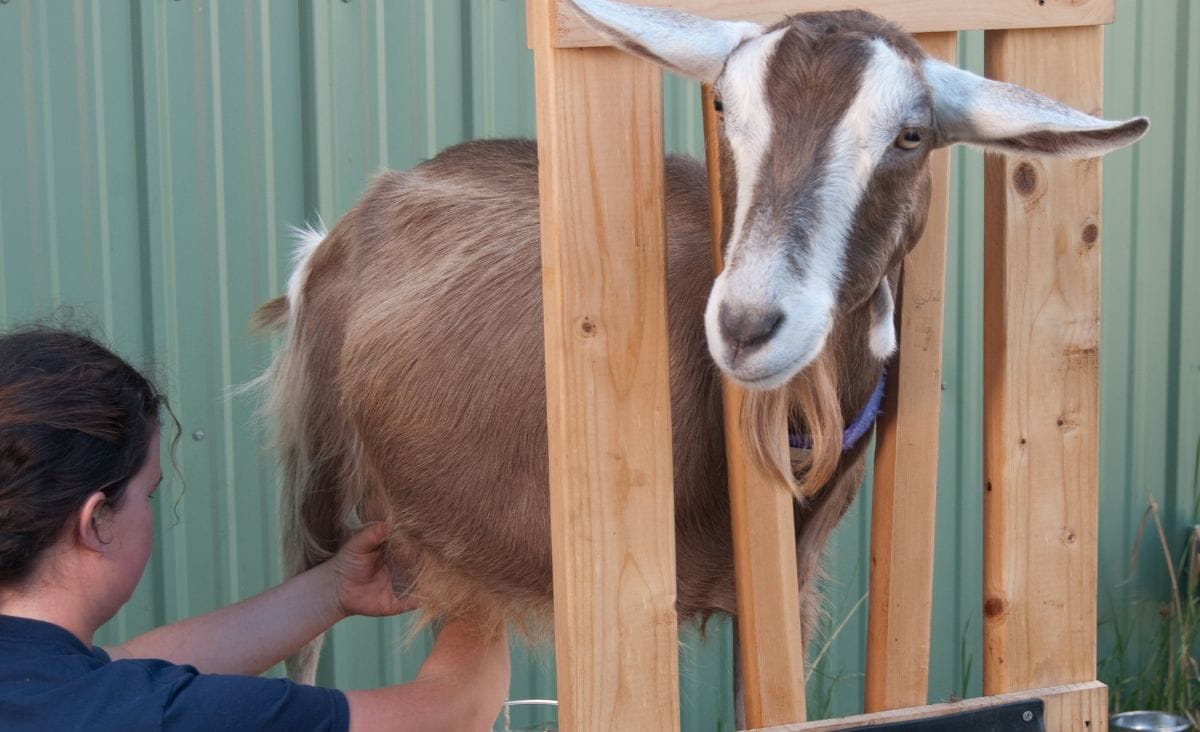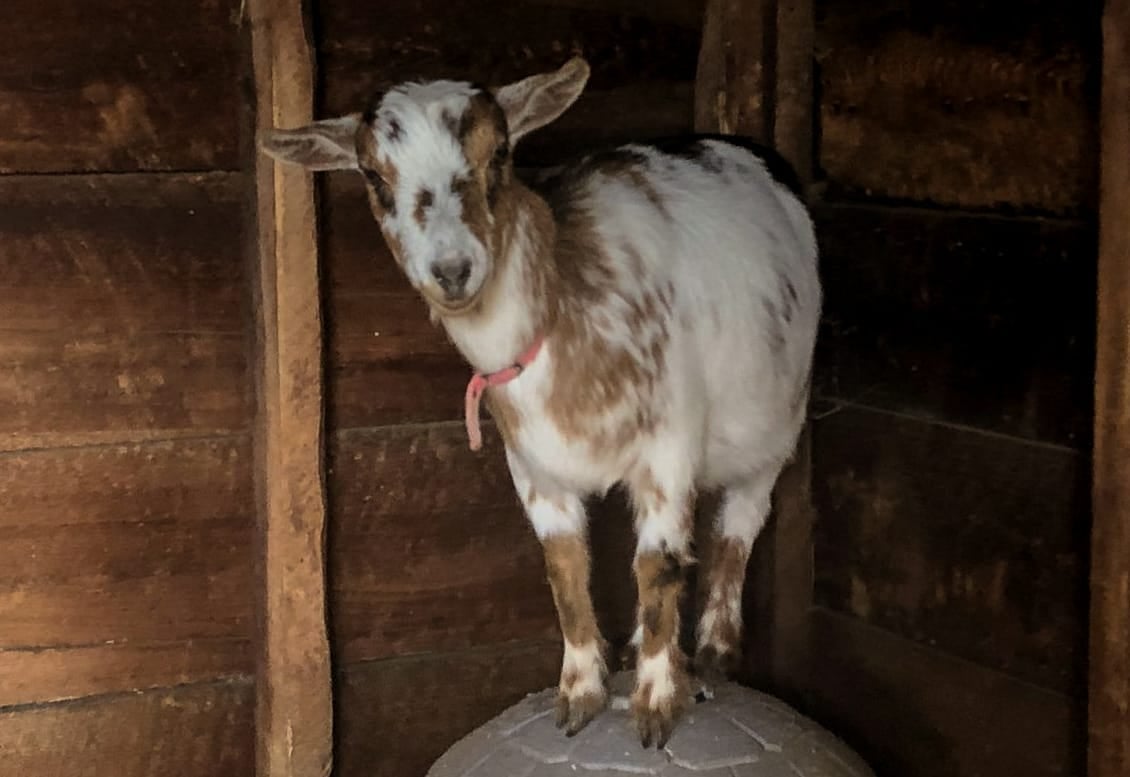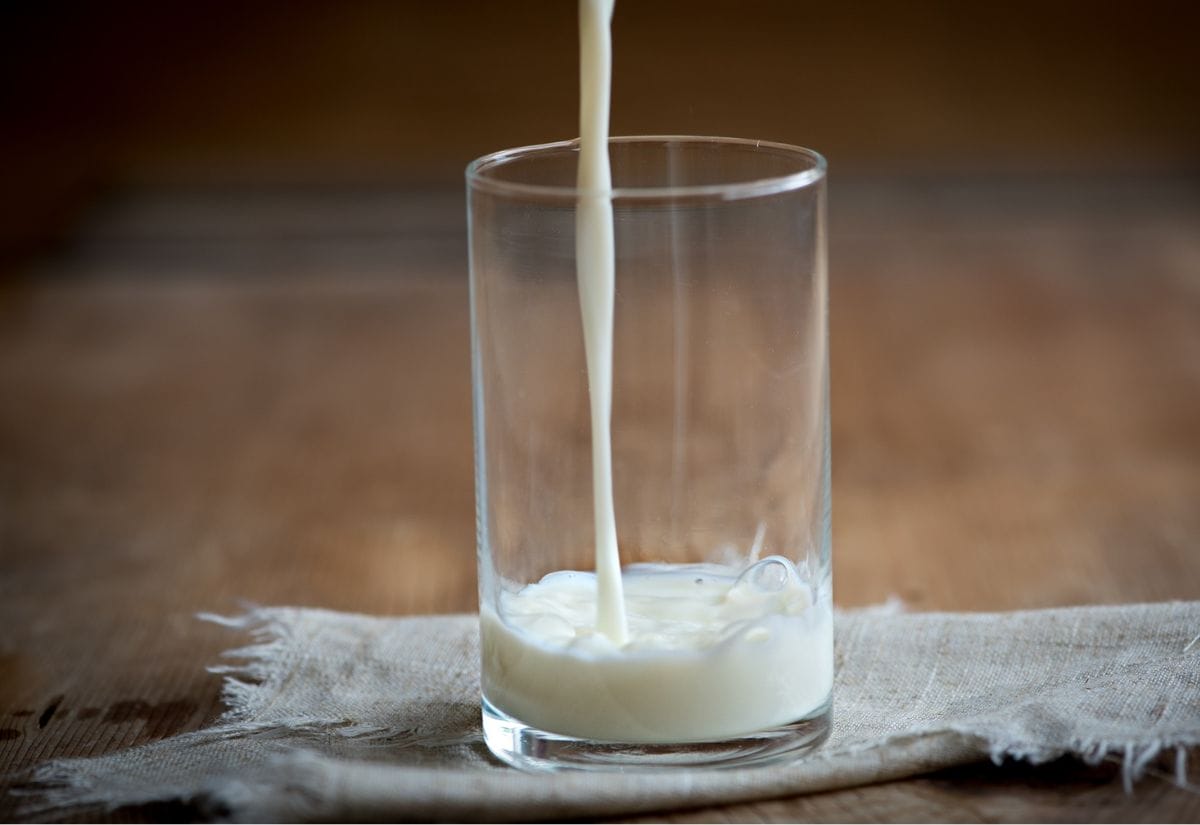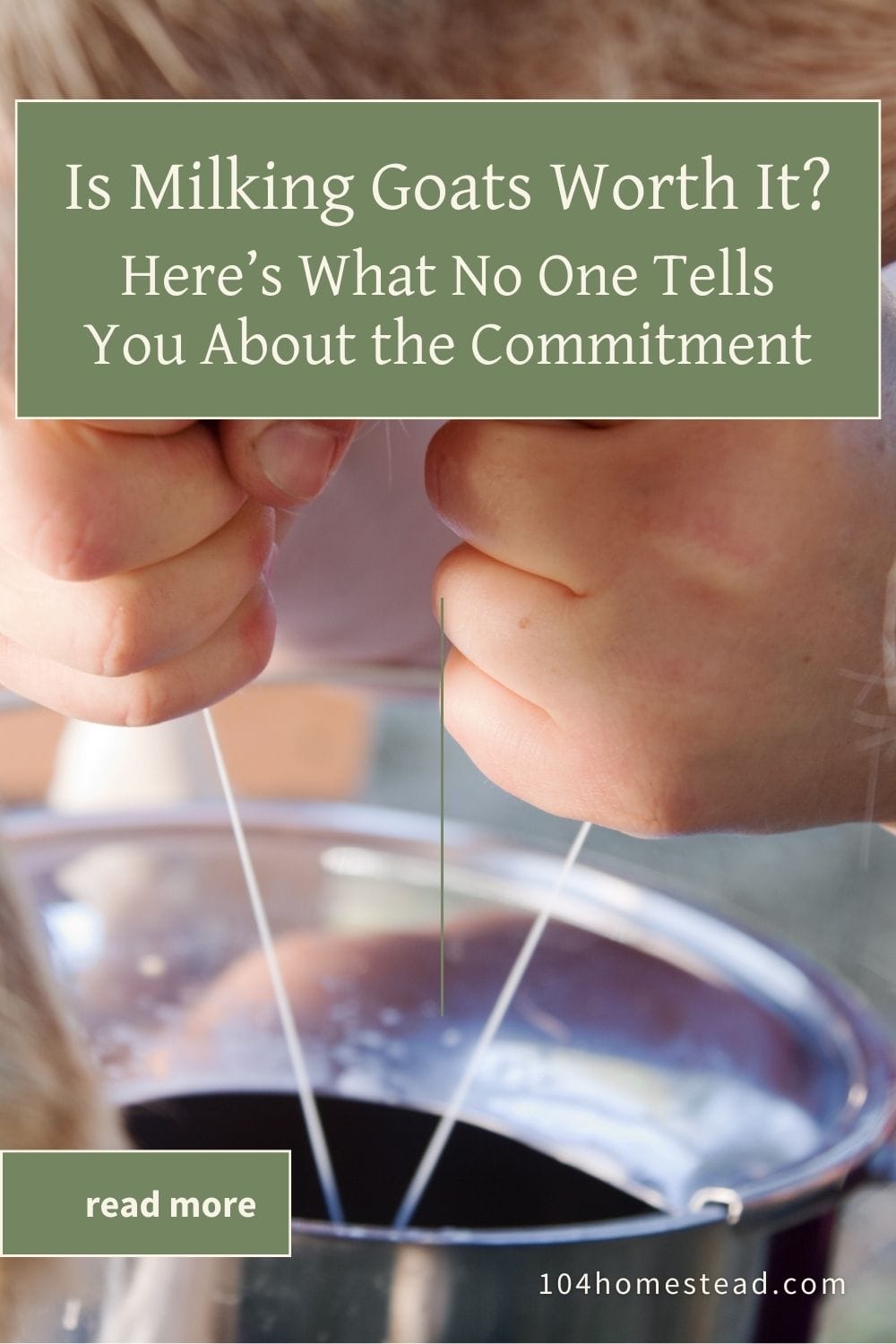Is Milking Goats Worth It? The Truth No One Tells You
Wondering if milking goats is really worth the time and effort? Here’s what it’s like—from struggles to wins—and why I still say yes.

There’s something idyllic about the idea of fresh milk on your own little homestead. Maybe you’ve imagined a sweet little goat standing calmly on a milk stand while you collect creamy goodness in a stainless steel pail. That dream is what got me started, too.
But let’s be honest—homesteading dreams are rarely as simple as they seem. If you’ve ever found yourself wondering if milking goats is actually worth the time, energy, and learning curve, you’re not alone. I’ve been there. And after years of hauling water buckets, chasing goats through fences, and kneeling on cold mornings with sore hands, I have some real-life experience to share. Let’s break it down.
Falling for the Dream
Before I had goats of my own, I spent hours reading about them. Blog after blog painted this picture of quiet mornings spent leaning against a well-behaved doe while she happily munched her grain and the milk flowed effortlessly. I imagined cheese-making afternoons, creamy milk in my coffee, and goats that followed me around like loyal companions.
And honestly? That dream isn’t wrong—it’s just…incomplete.
What those dreamy posts didn’t show was the learning curve, the missteps, and the sheer stubbornness of both goats and humans trying to figure it all out. I chose Nigerian Dwarf goats because they were small, friendly, and made milk with a high butterfat content—perfect for cheese. Here’s why they’re such a great fit for small homesteads, especially when space and personality matter.

The First Few Weeks: Chaos, Kicks, and Cold Coffee
We started with a pregnant Abby and a shy junior doe named Sadie. Sadie had been milked before, but let’s just say she wasn’t thrilled to meet her new, very green milkmaid. The first time I tried to milk her without a stand? Disaster. It took two people, a leash, and some creative body blocking just to get a few sad ounces into a jar.
Once we got a proper stanchion, I figured things would magically improve.
Spoiler: It Didn’t Get Easier Overnight
Milking Nigerian Dwarf goats isn’t exactly like milking a cow. Their teats are smaller, the aim takes practice, and your hands cramp in ways you didn’t think possible. At first, I was getting six ounces per milking. And it took ten minutes an ounce.
If you’re feeling overwhelmed by technique, you’re not alone—there are a ton of milking methods, and it might take some experimenting to find what works best for you. Here’s how to explore different milking styles and find the right fit.
What They Don’t Tell You About the Commitment
When you decide to milk goats, you’re also deciding to rearrange your life around them. Milking isn’t a once-in-a-while task—it’s twice a day, every day, at roughly the same time. Rain or snow, sick kid or dinner plans, those goats need to be milked.
No Days Off—Even When You Want One
You can’t skip a milking without consequences. Not only will your doe be uncomfortable, but you risk mastitis and a sudden drop in production. And unless you have a backup milker you trust, it means vacations get tricky, weekends away become rare, and spontaneity gets traded for structure.
There’s also the mess. Goats poop constantly. They dance on the milk stand. They scream when they’re in heat or when they think you’re late. And they have zero respect for your nice jeans or clean milk pail.
If you’re still on the fence about goats, it helps to look at the full picture. Here’s a breakdown of what raising dairy goats actually costs—from housing to feed to vet care.
But—and this is a big one—once you commit, and once it starts to click, it’s incredibly rewarding.
So…Is It Worth It?
Yes. Unequivocally yes. But not for everyone.
If you’re dreaming of home dairy because it seems easy, budget-friendly, or low-maintenance, goats might not be your best bet. But if you’re looking to deepen your connection to your food, learn new skills, and enjoy the kind of satisfaction that only comes from doing something the hard way—then absolutely, it’s worth it.
What Makes It Worth It (For Me)
- The milk is incredible. Nigerian Dwarf milk is sweet, creamy, and rich. I’ve made cajeta, yogurt, cheese, and lattes that ruin me for store-bought dairy.
Getting great-tasting milk isn’t just luck—it comes down to cleanliness, handling, and storage. This simple tip made a huge difference in the flavor of our milk. - The bond is real. Our goats know us. They trust us. They follow us around like dogs and holler if we’re late for milking.
- It builds resilience. Every goat-related problem taught me something—about patience, about troubleshooting, and about showing up.

Things That Helped Me Stick With It
- Investing in the right gear early on: A sturdy stanchion, a hobble for training, and a seamless pail saved my sanity.
Sanitation makes a big difference in both milk flavor and udder health. Here’s my go-to recipe for an easy homemade teat wash that keeps our girls clean and comfortable. - Starting small: One milking doe was plenty in the beginning. Don’t overdo it.
- Having backup: Sometimes milking is a two-person job, and that’s okay. Enlist help when you need it.
- Celebrating the wins: The first time I milked with both hands like a pro? I felt like I’d climbed a mountain.
More Questions About Milking Goats? Let’s Clear Them Up
Pin This for When You’re Ready to Start Milking Goats

Milking goats isn’t easy—but it is deeply rewarding. It ties you to your land, your animals, and your own growth in a way not much else can. You’ll mess up. You’ll get frustrated. You’ll probably curse at a goat or two. And one day, you’ll make a batch of cheese or pour a rich splash of milk into your coffee and think, “Okay, this was worth it.”
Thinking about goats but not sure if you’re ready? Let me know in the comments—I’d love to share more of what helped me decide.





I love your post. I feel in love with goats too and now have 2 pygoras, I am about to shear for the first time. Maybe someday I will share the experience in a blog. I just love my girls.
Love the story. We are the proud owners of 3 Nigerian Dwarf goats. Beginners when we brought them home as well. Our milking Doe has been providing milk for two years now. She has only kidded once and we get appx 20 to 24 oz per day. She is healthy and happy, however we are getting ready to dry her off. we have been milking for so long we’re not sure what we are going to do with the free time. Perhaps plan a vacation!
Thanks for a great post. Can you elaborate a bit more on the ‘unbearably loud’ part, the whens whys and hows, and what, if anything, in an ideal world, do you think would help keep the noise down?
Liz — the goats are only really loud when they hay is empty, or the water trough, or we’re doing something they don’t like…like wrestling the boys onto the milk stand to trim their hooves. The majority of the time, they are angels.
Darling post! We tried Nigerian Dwarf but their tears were just too small and was actually harder for me to milk. Switched to the large Alpine breed and it’s a breeze. We keep our Nigerian as a pet becuz although I retired her( ..So many babies) , she’ll always be a sweetie. Live their disposition and personalities.
Can I have the goats as pets without milking them? I am in love with goats and want to have some but I am trying to undetmrstand the amount of work it will required to have them.
Thanks
This is great, I know someday I will have a very similar experience and I can’t wait. All the best things in life are the hardest and so I know the struggle will be worth it…a goat cheese pizza is all it will take to remind me why I live this life! Until then, I’ll enjoy living vicariously through your struggle 😀
Oooh, goat cheese pizza. Why did this never occur to me. Yum!
I think we went through similar experiences with our cow (and other animals like guinea fowl). I like what you said about skills being hard won, sometimes I expect things to be easy, but it takes time to get good at homesteading, especially if you didn’t grow up around animals and farming (I didn’t). Thanks for sharing your experience!
Fellow milk maid here! Just wanted to put it out there, that toy can milk once a day without a terrible drop in production! Milling in the mornings has saved us on my boy’s game days, and evening time with the hubby.
What a beautiful little goat (Ella?). This is the breed I’m set on too! After 4 years of hinting and telling him how great all that milk & cheese would be, the old man wants goats now too LOL. Gee, only 4 years.
So I knew it was twice day
Is it based on a certain time or can you choose. ?
Hi Amy – Lucy wasn’t used to being milked, so we set a schedule that was convenient for us, and close to the standard of 12 hours between morning and evening milkings. Right now, we milk her at 8 am and 7:30 pm and she has no issues with that timing. If she had been milked by her previous owner at a different schedule that I wanted to adjust, I would have done it in small increments so as not to cause her any discomfort.
thank you so much for this incite into the real realities of owning goats, it seems most people just gloss over things and its not until you see first hand how things really are.